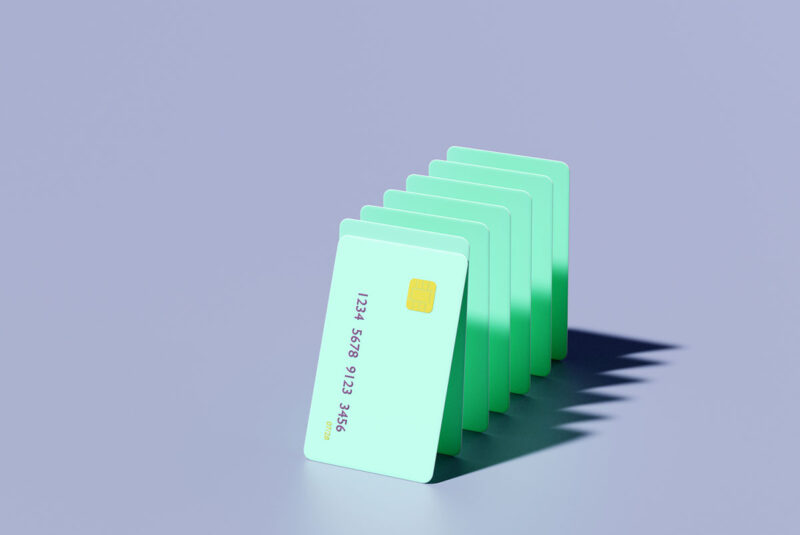A Capital One cash advance, like cash advances from other card issuers, is one way to get immediate funds from an ATM with your credit card using your PIN.
It’s essentially like getting a cash loan from your credit card issuer. However, these are far from ideal because of the high fees and interest rates you’ll pay.
Before considering a cash advance, you should familiarize yourself with all of the details and any other options you may have to get money. Ultimately, a Capital One cash advance (or any cash advance) should only be used as a last resort.
Most credit card companies, like American Express, Bank of America, Chase, and Citi also offer cards with cash advances.
How Do I Get a Capital One Cash Advance?
If you do need to get a cash advance with your Capital One card, you’ll need to know the basics of how to get it, where you can get it, and what you’ll pay for it. Here’s a brief overview:
- Be aware that cash advances will incur extra fees and will start accruing interest immediately.
- Head to an ATM.
- Insert your card, enter your PIN, choose “credit card” or “credit.” as the withdrawal option
- Choose the amount of cash you’d like.
- Finalize the transaction. Grab your card, the cash, and your receipt.
Take a look at a more in-depth breakdown below.
How to Get Cash
You’ll be able to use your Capital One credit card to get a cash advance at any ATM, though you may have to pay extra fees depending on the ATM you use (see our section on fees below). To avoid additional ATM fees, you can find Capital One ATMs here.
When getting cash from your credit card at an ATM, you’ll basically go through the same process as using a debit card to withdraw from a checking account:
- Insert your credit card.
- Enter your credit card’s PIN (personal identification number).
- Select “credit card” or “credit” as the option to withdraw from on the screen.
- Confirm you agree to any ATM fees outlined (if applicable).
- Collect and confirm the amount of cash received from the dispenser.
- Finalize the transaction on the screen and save your receipt. Make sure you take your card, too.
Your Credit Card PIN
You’ll need to know your card’s PIN, just like for an ATM card or debit card. When you first get a Capital One card, you’re usually given the option of selecting your own PIN, receiving a system-generated PIN, or declining a PIN.
If you’ve forgotten your PIN or don’t have one yet, you can get one online:
- Sign in to your online Capital One account.
- Click “More Account Settings,” then select “Control Your Card” and follow the directions under “Get a Cash Advance.”
- You may be eligible to get a code by email or text to let you select a custom PIN to use immediately. Otherwise, the PIN will arrive by mail in approximately 7 to 10 business days.
You can also get a PIN by calling Capital One’s support phone number:
- Call 1-800-227-4825.
- Follow the directions from its automated system. It will let you request a PIN that will arrive in 7 to 10 days by mail. If you know your current PIN, you can simply update it on the phone.
Quick Guide
How to get a cash advance if you don’t know your PIN
If you don’t know your PIN or haven’t set one up and need to get money immediately, you can still obtain a cash advance by going in person to a bank lobby that displays the Visa or Mastercard credit card logo (your card has to match). You’ll just need to provide a government-issued photo ID like a driver’s license along with your Capital One card.
Cash advance limits
You’ll need to know how much money you can withdraw. Like your purchase credit limit, your Capital One cash advance limit will depend on various factors based on what the issuer believes you can pay back (e.g. your income, credit utilization, and payment history) and it’s often lower than your card’s overall credit limit.
You may have a daily cash advance limit along with that, and some ATMs may have their own limits as well.
What Does a Capital One Cash Advance Cost?
You’ll want to understand all fees and interest rates so you know the full cost of your Capital One cash advance.
Capital One Cash Advance fees
Most cards, including Capital One credit cards, have cash advance fees. For Capital One cards the cash advance fee is typically 3%, with a $10 minimum.
You may incur ATM fees, too. If you use an ATM outside of Capital One’s network, including generic ATMs like MoneyPass and Cardtronics, you’ll likely pay fees in addition to those outlined in your account terms. Usually, ATM surcharges are between $2 – $5 if you’re not an account holder with the financial institution that manages the ATM.
Capital One Cash Advance Interest Rates
With a Capital One cash advance (or a cash advance from any credit card issuer) you’ll usually pay a higher interest rate than regular purchases. The interest charges for a cash advance also begin accumulating immediately, unlike your regular card purchases which usually have a grace period of approximately 25 days.
For comparison, here are some of the interest rates you’ll pay for a cash advance and a purchase with some popular Capital One cards.
| Card | Cash Advance APR | Purchase APR |
|---|---|---|
| Capital One Savor Cash Rewards Credit Card | 24.99% Variable | 15.99% – 24.99% Variable |
| Capital One Quicksilver Cash Rewards Credit Card | 24.99% Variable | 14.99% – 24.99% Variable |
| Capital One Venture Rewards Credit Card | 23.99% Variable | 15.99% – 23.99% Variable |
| Capital One VentureOne Rewards Credit Card | 24.99% Variable | 14.99% – 24.99% Variable |
Note: Interest rates are subject to change and may vary based on your specific terms and credit approval.
Insider tip
If you end up getting a cash advance, try to pay it off as soon as possible to minimize the interest charges that will accrue every day.
Are There Other Ways to Get Cash With a Credit Card?
There are a few other ways to get cash using a card, including:
- Use a Discover credit card’s cash over option. This is a fee-free benefit to get cash at a variety of retailers, which works just like getting cash back with a debit card while checking out at a retailer. Learn more about the Discover cash over program.
- Get a bank balance transfer with a 0% APR card. To go this route, you first need to have a credit card with a 0% balance transfer APR offer that allows you to transfer funds to your bank account (not all do). Then, you request a balance transfer and have your card issuer send the cash directly to your bank account.
Learn more about bank balance transfers along with other alternatives to getting a cash advance.
What Are The Best Capital One Cards?
Even if you’re not trying to get a cash advance, here are some of the best Capital One cards you may want to add to your wallet:
- Best for Dining: Capital One Savor Cash Rewards Credit Card
- Best With No Annual Fee: Capital One VentureOne Rewards Credit Card
- Best for Travel: Capital One Venture Rewards Credit Card
- Best 0% APR Card: Capital One Quicksilver Cash Rewards Credit Card



